Here is my final project for ARCH 401.
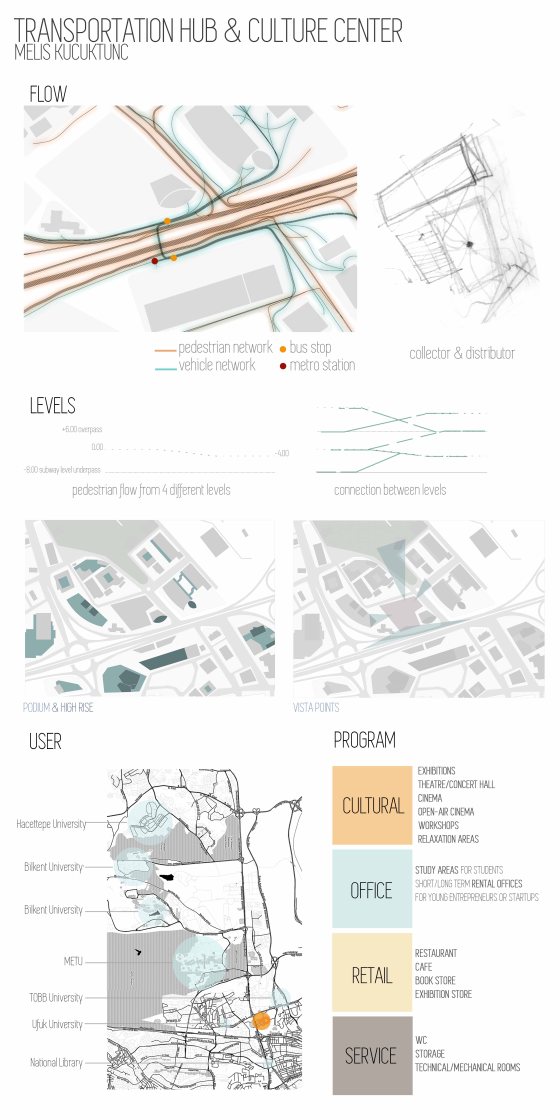
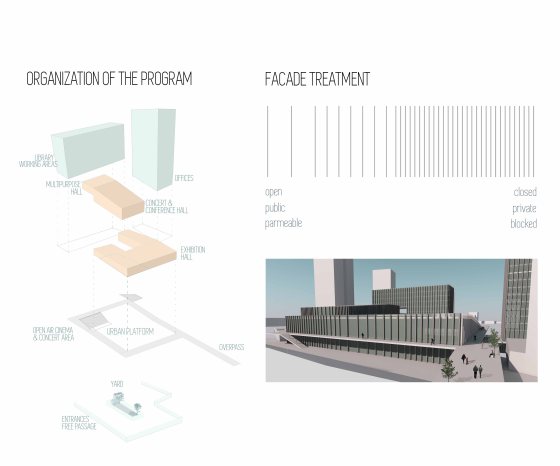
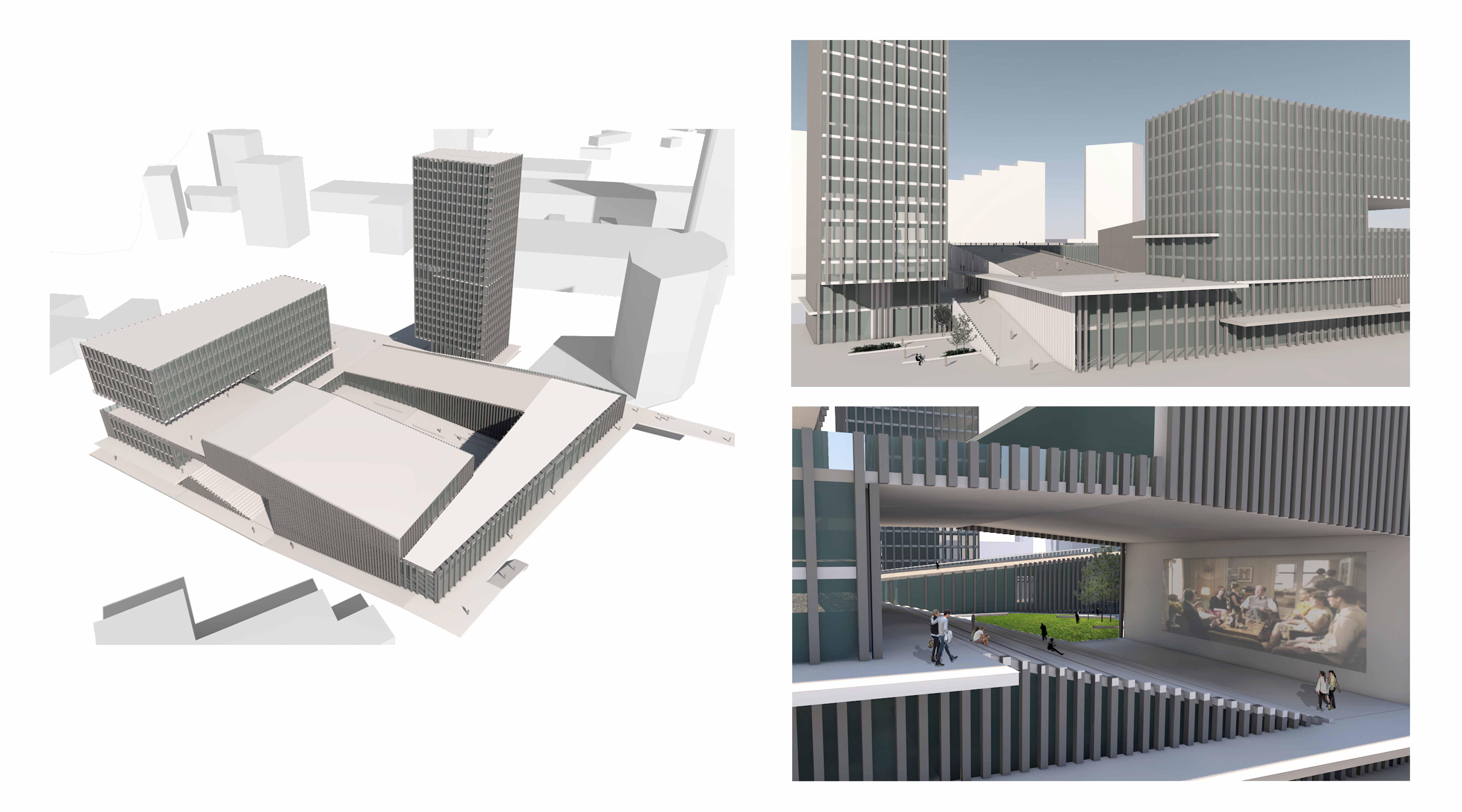
Here is my final project for ARCH 401.


After partially decided on the functions and the program, we are assigned to find precedents in similar scale.
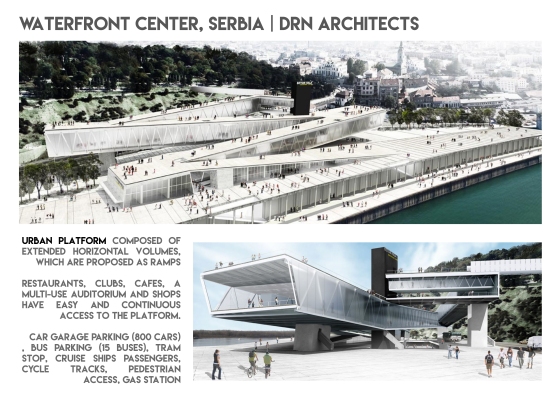
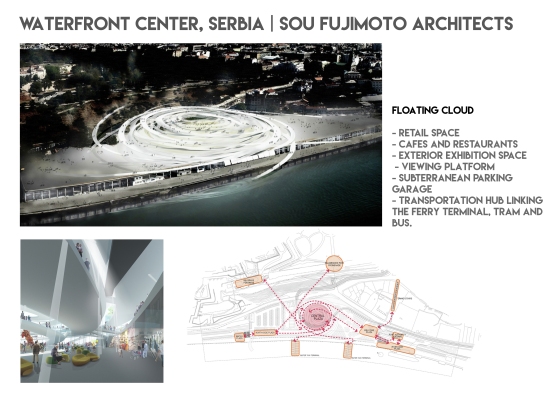
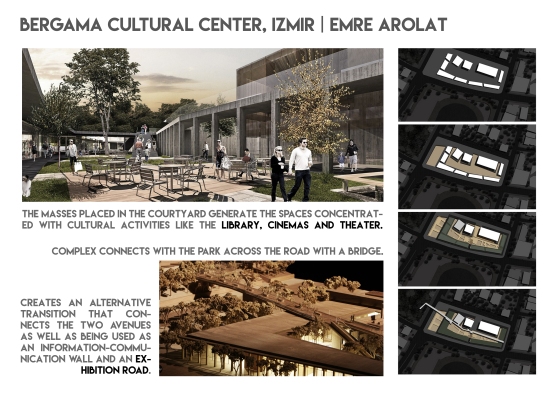
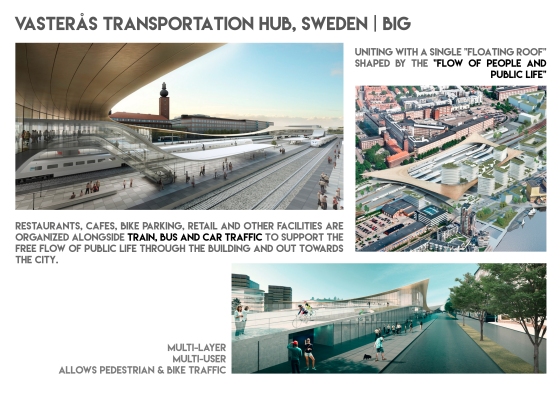
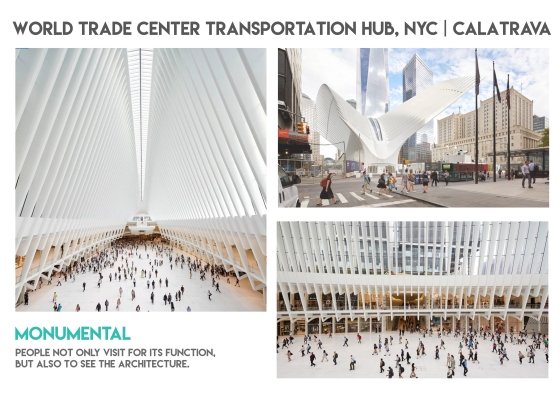
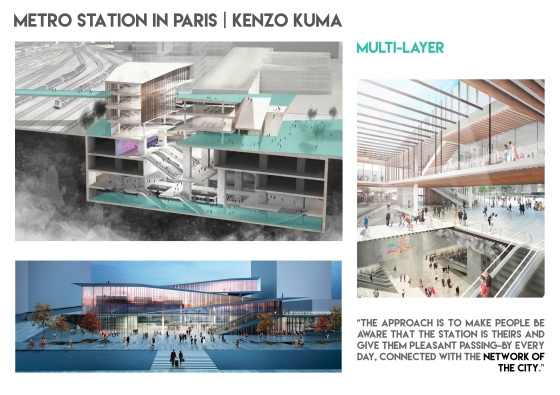
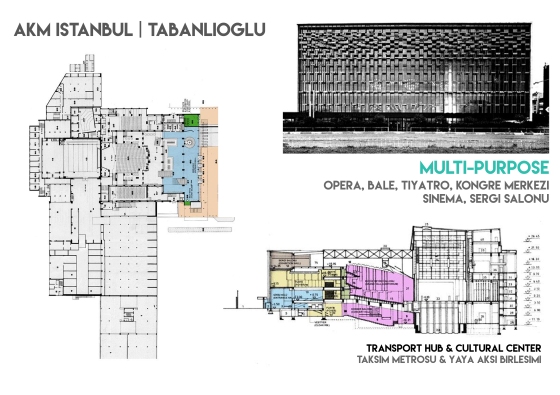
At the first half of the semester, we were asked to analyze Sogutozu district as a group project. My group and I were responsible for Mobility and Accessibility of the district.
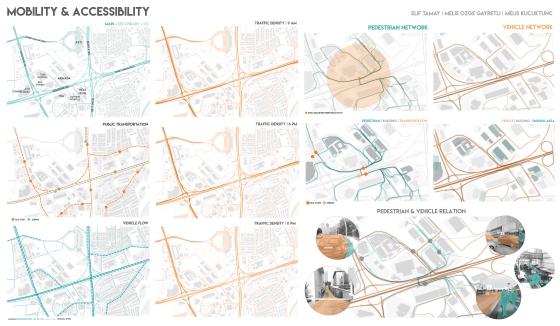
Based on the analysis we made, the major problem was lack of space for pedestrians. The whole area has extreme traffic density, being located at the intersection of Eskisehir and Konya Road, and Ankara’s public transportation network. The area therefore used by thousands of people everyday, both pedestrians and vehicles. So in our analysis we tried to focus on the relationship between these two.
In the first semester of the Fourth year design studio we have been introduced the challenges that the contemporary urban condition imposes on architecture by conceptualizing the word emsalsiz. Here, the Turkish word emsalsiz is used in two senses. First it points to the becoming obsolete of emsal, which is originally an urban measure defined as “the ratio of the building floor area in relation to the land”.
In the last decades large-scale urban projects in the metropolitan areas have been challenging architectural design in respect to complexity, program, materiality, mobility and scale. Likewise in Turkey, the recent urban transformation projects are shifting the existing paradigms where the urban codes present unprecedented conditions. Rather than bringing measures of uniformity, these rules denote exceptional measures of construction for certain sites. Such a context of “bigness” coerces the conventional precedents of architecture as well. Prophesized by Rem Koolhaas in 1990s this is a new scale where architecture has to rethink its essentials.
In the recent urban transformation projects this ratio is so high and exceptional that emsal ceases to be a measure. This is a condition “without measure” that can be coined as emsalsiz. As the congestion and scale increases the conventional architectural types and urban typologies are almost impracticable. As such we may refer to the second meaning of emsalsiz that is “without precedent”. In architecture emsalsizlik may both point to a crisis of representation but may also be taken as a possibility for innovation and originality. It is not an easy task to introduce the student of architecture with emsalsizlik.
As part of group work the students are asked to analyze, diagrammatize and document a newly developing urban center as a case. The site where the exercise will be performed is the northern section of the Eskişehir Road from the Konya Yolu Junction to the Çukurambar underpass, part of the recent urban center known generically as the Söğütözü district. The plots facing this larger area are also to be included. Besides the mapping on large scale, the architectural types and urban typologies on the location will also be documented in order to comprehend the architectural scale of the vicinity; each group will be responsible for certain buildings. The emsal of each plot and building will also be documented both in the sense of scale and also in the sense of its possible precedents. The outcomes of these analyses will be taken as the basis for the definition of the program of the second assignment where a specific plot within the larger district is given as the project site; the site of the OYAK Renault factories. This a parallelogram plot in between the Eskişehir Avenue, Yaşam Avenue and 3rd Street, which has a ground area of approximately 20 000 m2.